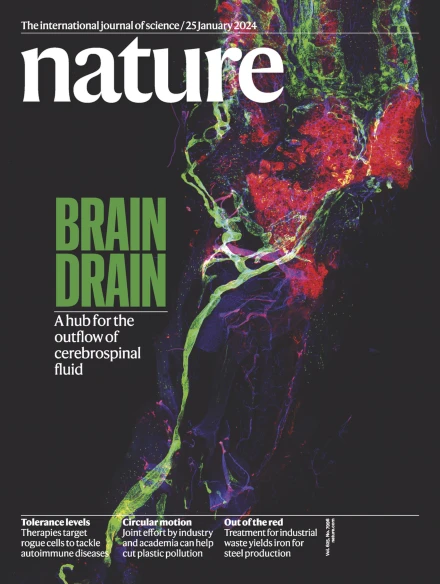Sustainable nickel enabled by hydrogen-based reduction
IF 50.5
1区 综合性期刊
Q1 MULTIDISCIPLINARY SCIENCES
引用次数: 0
Abstract
Nickel is a critical element in the shift to sustainable energy systems, with the demand for nickel projected to exceed 6 million tons annually by 20401–4, largely driven by the electrification of the transport sector. Primary nickel production uses acids and carbon-based reductants, emitting about 20 tons of carbon dioxide per ton of nickel produced5–7. Here we present a method using fossil-free hydrogen-plasma-based reduction to extract nickel from low-grade ore variants known as laterites. We bypass the traditional multistep process and combine calcination, smelting, reduction and refining into a single metallurgical step conducted in one furnace. This approach produces high-grade ferronickel alloys at fast reduction kinetics. Thermodynamic control of the atmosphere of the furnace enables selective nickel reduction, yielding an alloy with minimal impurities (<0.04 wt% silicon, approximately 0.01 wt% phosphorus and <0.09 wt% calcium), eliminating the need for further refining. The proposed method has the potential to be up to about 18% more energy efficient while cutting direct carbon dioxide emissions by up to 84% compared with current practice. Our work thus shows a sustainable approach to help resolve the contradiction between the beneficial use of nickel in sustainable energy technologies and the environmental harm caused by its production. A one-step process using fossil-free hydrogen-plasma-based reduction is used to extract nickel from low-grade ore and create high-grade ferronickel alloys, providing a more sustainable and environmentally friendly method for obtaining nickel.

通过氢基还原实现可持续镍
镍是向可持续能源系统转变的关键因素,到20401、2,3,4年,镍的年需求量预计将超过600万吨,主要受运输部门电气化的推动。初级镍生产使用酸和碳基还原剂,每生产一吨镍排放约20吨二氧化碳5,6,7。在这里,我们提出了一种方法,使用无化石氢等离子体为基础的还原提取镍从低品位矿石变体称为红土。我们绕过了传统的多步工艺,将煅烧、冶炼、还原和精炼合并为一个单一的冶金步骤,在一个炉内进行。该方法以快速还原动力学生产高品位镍铁合金。通过对炉内气氛的热力学控制,可以选择性地还原镍,得到杂质最少的合金(硅0.04 wt%,磷约0.01% wt%,钙0.09 wt%),无需进一步精炼。与目前的做法相比,提出的方法有可能提高18%的能源效率,同时减少高达84%的直接二氧化碳排放。因此,我们的工作表明了一种可持续的方法,可以帮助解决镍在可持续能源技术中的有益利用与镍生产对环境造成的危害之间的矛盾。
本文章由计算机程序翻译,如有差异,请以英文原文为准。
求助全文
约1分钟内获得全文
求助全文
来源期刊

Nature
综合性期刊-综合性期刊
CiteScore
90.00
自引率
1.20%
发文量
3652
审稿时长
3 months
期刊介绍:
Nature is a prestigious international journal that publishes peer-reviewed research in various scientific and technological fields. The selection of articles is based on criteria such as originality, importance, interdisciplinary relevance, timeliness, accessibility, elegance, and surprising conclusions. In addition to showcasing significant scientific advances, Nature delivers rapid, authoritative, insightful news, and interpretation of current and upcoming trends impacting science, scientists, and the broader public. The journal serves a dual purpose: firstly, to promptly share noteworthy scientific advances and foster discussions among scientists, and secondly, to ensure the swift dissemination of scientific results globally, emphasizing their significance for knowledge, culture, and daily life.
 求助内容:
求助内容: 应助结果提醒方式:
应助结果提醒方式:


